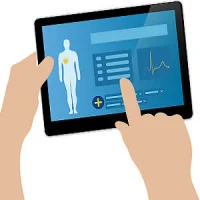Collaboration between care providers leads to efficient delivery of care, resulting in better patient outcomes. Care collaboration can be increased with expanded use of health information technology and information exchange, according to an article in Health Data Management.
"Today, healthcare lacks the support of a closed-loop system, one that emphasises a bidirectional flow of information. Healthcare is muddled with reactive care, instead of preventive, anticipated care. It is that lack of prevention and anticipation that have an adverse impact on the overall healthcare cost and patient outcomes. EHR and EMR systems are the main anchors of today’s health IT that offer promise in breaking this unproductive cycle," write authors Donald Voltz, MD (Aultman Hospital), David Conejo (CEO at Rehoboth McKinley Christian Health Care Services) and Thanh Tran (CEO of Zoeticx).
However, two factors currently limit the use of EHRs – the boundary of the health organisation and unidirectional systems. Health information exchanges address EHR limitations, with their capability to provide support across health organisations, but actually worsen the unidirectional character of the EHR, the authors point out.
In a team-based care collaborative model, a multidiscipline group of care providers supports and implements treatment, with the patient at the centre. A bidirectional information flow is an absolute must to achieve this model. Neither EHRs or HIEs can address the requirements for a care collaborative model, the authors say, adding that hospital leaders and CIOs should look at this issue carefully.
"This IT issue offers healthcare facilities the perfect opportunity to not only promote the care collaborative model, but offer a solution to resolving the bidirectional information flow problem and enable them to move forward with a new platform to achieve better patient outcomes, the goal of all healthcare facilities," write the authors.
Health Collaborative Ecosystem
This system is the delivery process that supports the care collaborative model, according to the authors. The system would include all providers of health-related services to the chronically ill patient diagnosed with one or more of the designated chronic and debilitating diagnosis that utilise the most significant percentage of healthcare spending. Such a system would be:
- Capable of integrating physical and mental care environments.
- An integrated layer complementing (including EHR-agnostic) existing health IT infrastructures, supporting care activities beyond the brick and mortal walls of their facility or clinic.
- Consensus among providers to standards of care and bidirectional information flow that encourages innovation, compliance with regulations, secures privacy and adopts a continuous process of improvements to better promote the patient's well-being.
"An ecosystem is best approach for a variety of reasons. It is a collective system, including a health IT solution and consulting guidance and support, for hospital operations to maximise the benefits of care collaboration, through efficiency and scalability of care providers’ bandwidth. It must include an auditable compliance component to provide crucial measurements and enforce quality guidelines for the model according to hospital and clinic management," the authors add.
Source: Health Data Management
Image Credit: Pixabay
Latest Articles
health IT, Health Information Technology, Care collaboration, information exchange
Care collaboration can be increased with expanded use of health information technology and information exchange, according to an article in Health Data Management.










